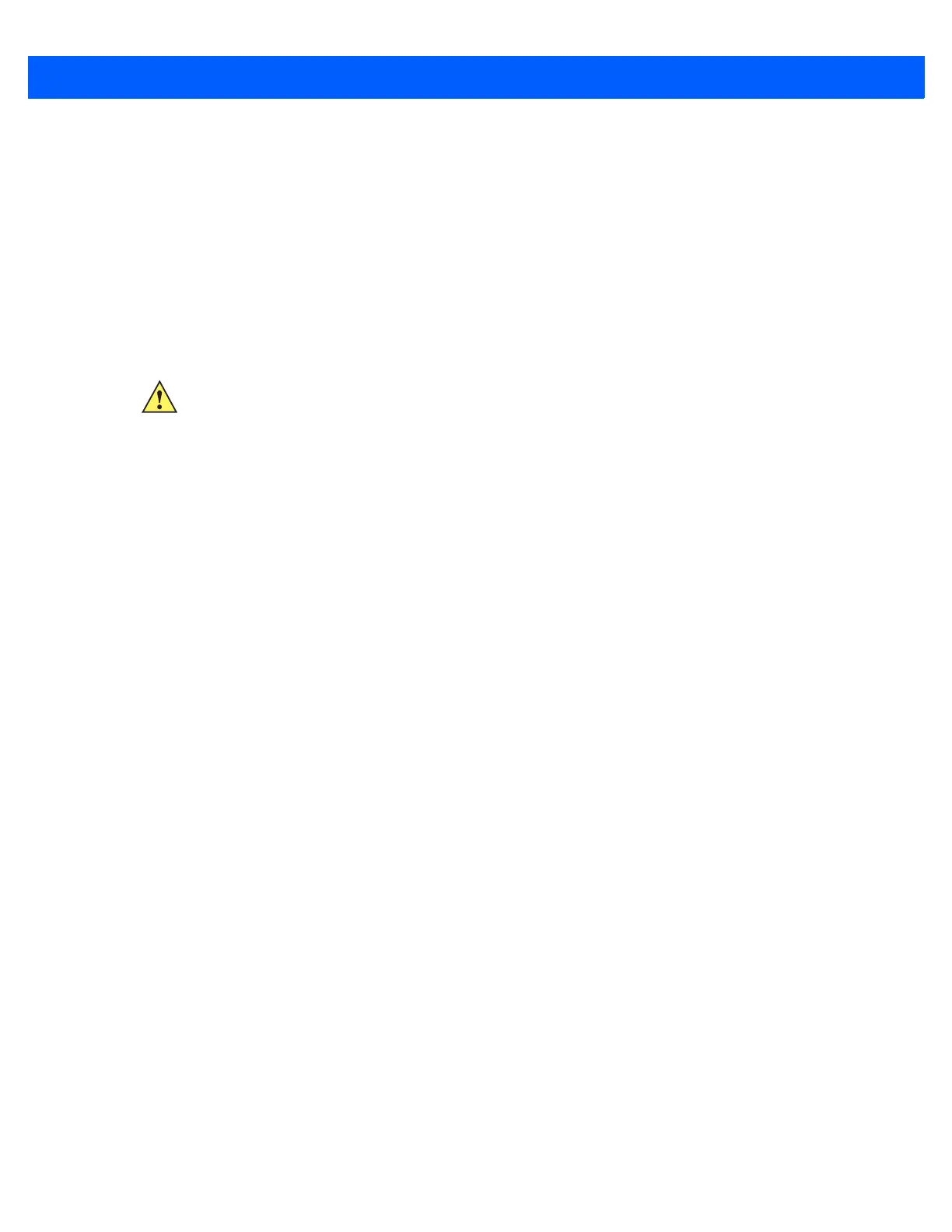MAINTENANCE, TROUBLESHOOTING & TECHNICAL SPECIFICATIONS 11 - 3
Health Care Linear Imagers
Cleaning the Health Care Linear Imager
The LI2208-HC0000BZZWW health care design allows safe cleansing of the product plastics with a variety of
cleaning products and disinfectants. If required, wipe the scanner with the following list of approved cleansers:
•
Isopropyl alcohol
•
Bleach/sodium hypochlorite
•
Hydrogen peroxide
•
Gentle dish soap and water
Daily Cleaning and Disinfecting
Following are the cleaning and disinfecting instructions for environments that require daily or more frequent
cleaning to prevent the spread of germs, including healthcare workers who need to disinfect their scanner after
each patient visit and retail and other shift workers who share devices.
1. Dampen a soft cloth with one of the approved cleaning agents listed above or use pre-moistened wipes.
2. Gently wipe all surfaces, including the front, back, sides, top and bottom. Never apply liquid directly to the
scanner. Be careful not to let liquid pool around the scanner window, trigger, cable connector or any other
area on the device.
3. Be sure to clean the trigger and in between the trigger and the housing (use a cotton-tipped applicator to
reach tight or inaccessible areas).
4. Immediately dry the scanner window after cleaning with a soft non-abrasive cloth to prevent streaking.
5. Allow the unit to air dry before use.
Monthly 'Deep Cleaning' Maintenance
Keep your Zebra scanner in good working order with a regular comprehensive cleaning routine to remove the
natural build-up of dirt that occurs with everyday use on connectors and the scanner exit window as well as the
main surfaces of the device.
1. Housing: Follow the instructions for daily cleaning and disinfecting above to give the housing a general
cleaning.
2. Scanner exit window: Wipe the scanner exit window with a lens tissue or other material suitable for
cleaning optical material such as eyeglasses.
3. Scanner connector:
a. Dip the cotton portion of a cotton-tipped applicator in isopropyl alcohol.
Rub the cotton portion of the cotton-tipped applicator in-line with the connector pins on the Zebra
scanner at least three times. Do not leave any cotton residue on the connector.
b. Use the cotton-tipped applicator dipped in alcohol to remove any grease and dirt near the connector
area.
c. Use a dry cotton tipped applicator and repeat steps c, d and e (do not apply alcohol as directed in any
of these steps).
IMPORTANT Cleansers that contain active ingredients not listed above should not be utilized on the
LI2208-HC0000BZZWW.
